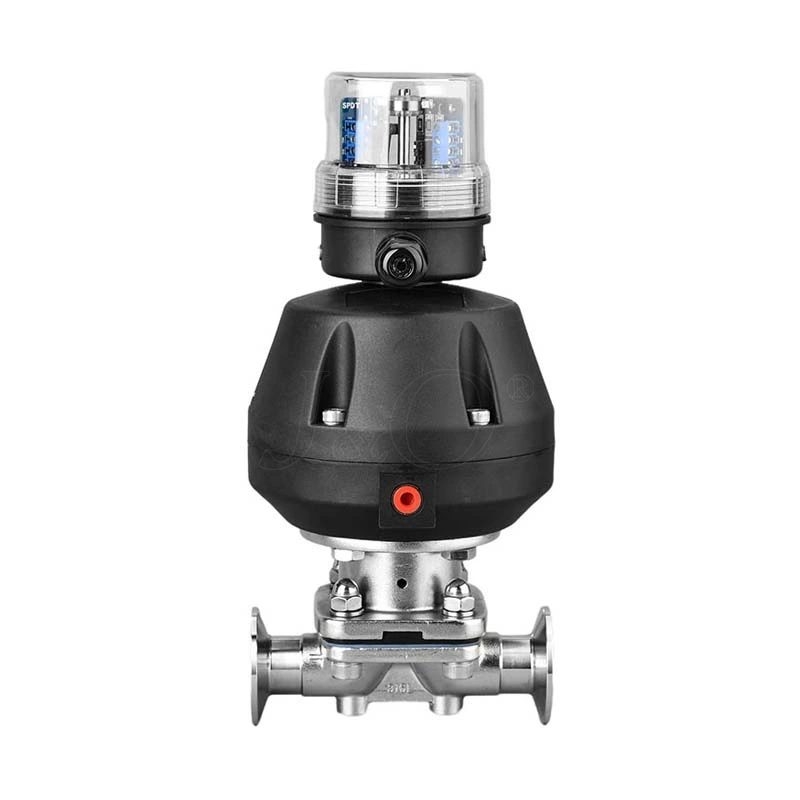Main Structure And Features Of Pneumatic Tank Bottom Diaphragm Valve
Sanitary Diaphragm Valve is a special valve driven by compressed air, mainly used to control the flow of fluid in the tank bottom or pipeline. Its design structure makes it particularly suitable for handling medium containing particles, high viscosity or corrosive media. Pneumatic tank bottom diaphragm valve is widely used in chemical, food, medicine, environmental protection and other industries.
The working principle of pneumatic tank bottom diaphragm valve is based on the reciprocating motion of the diaphragm. When compressed air acts on the pneumatic actuator, the actuator drives the diaphragm up and down to open and close the valve. The part of the diaphragm in contact with the fluid is usually made of corrosion-resistant materials to adapt to various harsh environments.
The main structure of the pneumatic tank bottom diaphragm valve:
1. Pneumatic actuator: The pneumatic actuator is the core component that drives the diaphragm to move, usually consisting of a cylinder, a piston and a compressed air inlet.
2. Diaphragm: The diaphragm is a key component of the valve, usually made of elastic materials such as rubber or polytetrafluoroethylene. It fits tightly to the valve body, and when the actuator is activated, the diaphragm moves to control the on and off of the fluid.
3. Valve body: The valve body is the main part of the valve. When designing, the flow characteristics of the fluid, the pressure bearing capacity of the valve and the sealing performance should be considered.
4. Sealing structure: In order to ensure that the valve does not leak when it is closed, a reasonable sealing structure needs to be designed between the valve body and the diaphragm.
Main features of pneumatic tank bottom diaphragm valve:
1. No leakage: Reasonable sealing structure design ensures that the valve does not leak when it is closed.
2. Fast response: Due to the use of pneumatic drive, the valve has a fast response speed and is suitable for occasions that require fast switching.
3. Wear resistance: The diaphragm has good wear resistance and is suitable for handling media containing particles.
4. Corrosion resistance: The diaphragm and valve body can be made of corrosion-resistant materials suitable for handling various corrosive media.
In short, pneumatic tank bottom diaphragm valves have been widely used in the field of industrial automation due to their corrosion resistance, no leakage, wear resistance and fast response. With the continuous advancement of technology, pneumatic tank bottom diaphragm valves will be more intelligent, efficient and reliable in the future, bringing more possibilities to fluid control systems.
